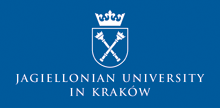Speaker
Description
Two the most known techniques based on positron-electron annihilation are PET (Positron Emission Tomography) and PALS (Positron Annihilation Lifetime Spectroscopy).
PET is a commonly recognized diagnostic method enabling imaging of the metabolism of chosen substances in the living organism. The PET imaging is based on an annihilation of the positron emitted by radiofarmaceutical with an electron from the body of the patient into two quanta with energy of 511 keV each. One of the most important applications is imaging of patients tumour location and size and aiming at the search for the possible metastases as metabolism rate rises significantly in these places and in effect the number of annihilating positrons.
In contrary PALS allows to follow of processes leading to positron annihilation, including creation and decay the positronium states. It is known that o-Ps lifetime value reflects size of the free spaces in which it is trapped. In a vacuum o-Ps annihilate emitting three photons, in the dense media some part of o-Ps can annihilate in pick-off process via the two photon emittion. In effect 3 fraction can reflect changes in tissues alteration.
It is proposed to include the new imaging method in PET scan based on positronium properties, i.e. directly reconstruct lifetime spectra in respective area of the body or prepare the new method based on tree photon to two photon annihilation rate.
Preliminary investigation preformed on real healthy and altered human tissues using PALS clearly indicates that it is possible to distinguish between healthy and diseased tissues and between different kind of lesions of the some organ using techniques based on positron annihilation.

